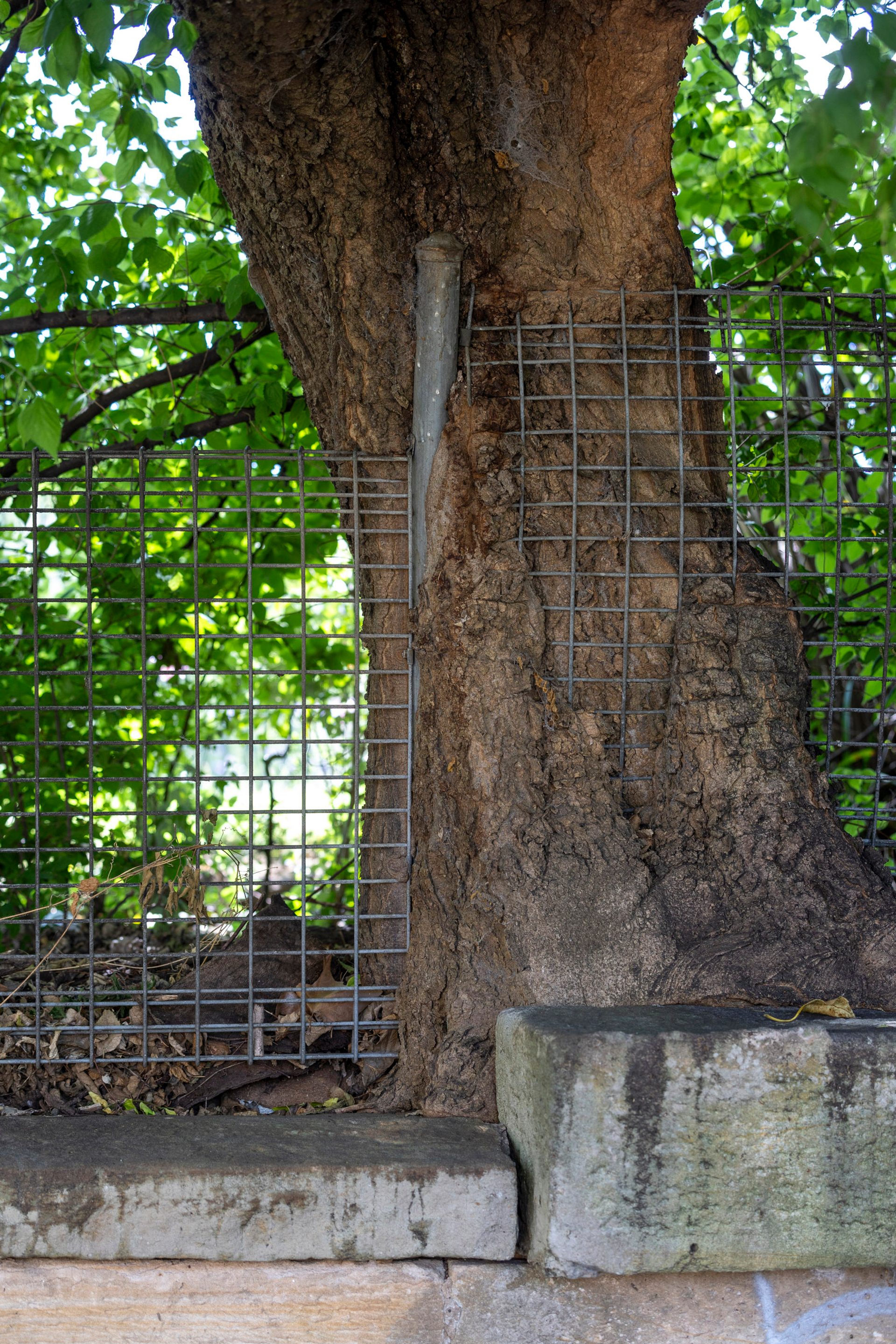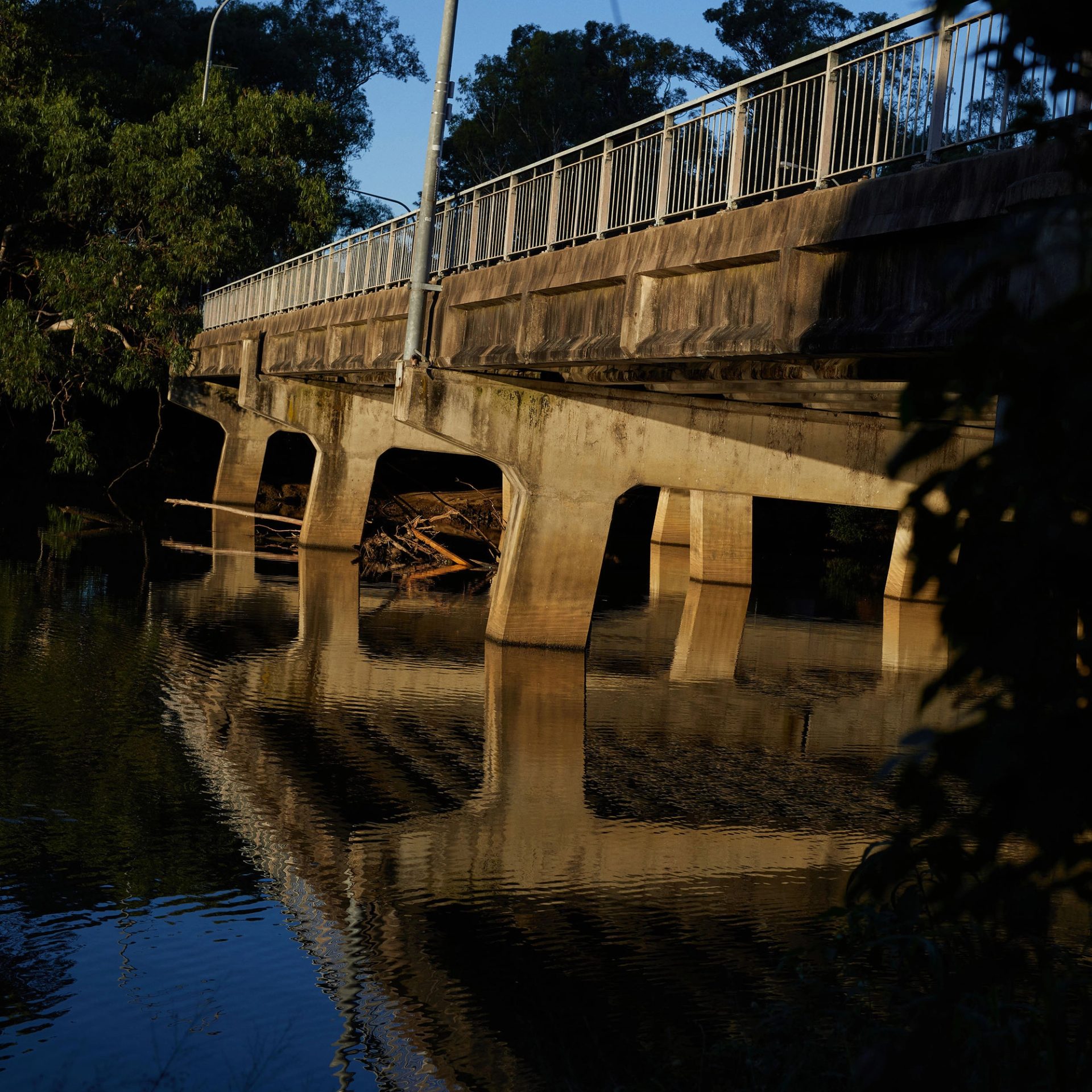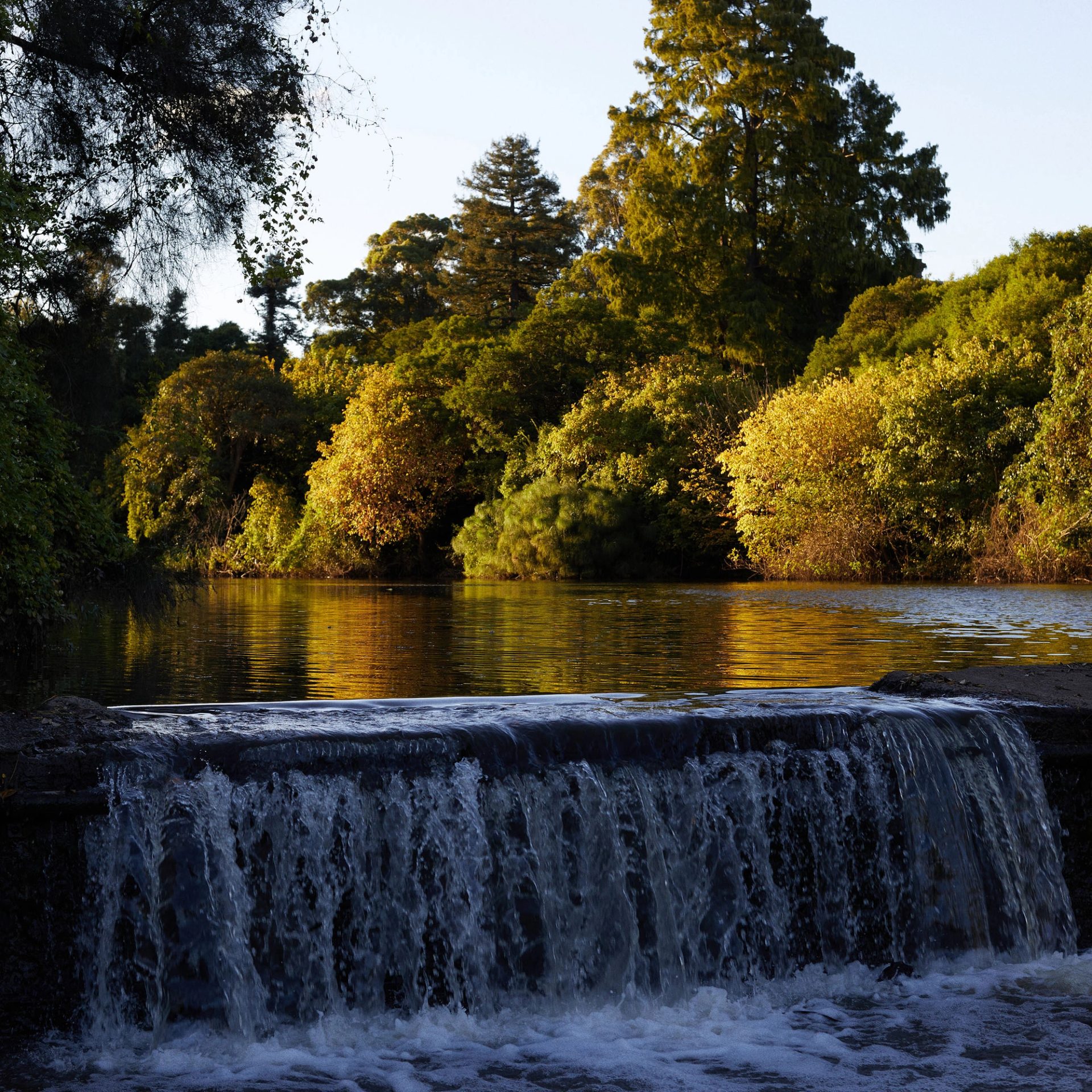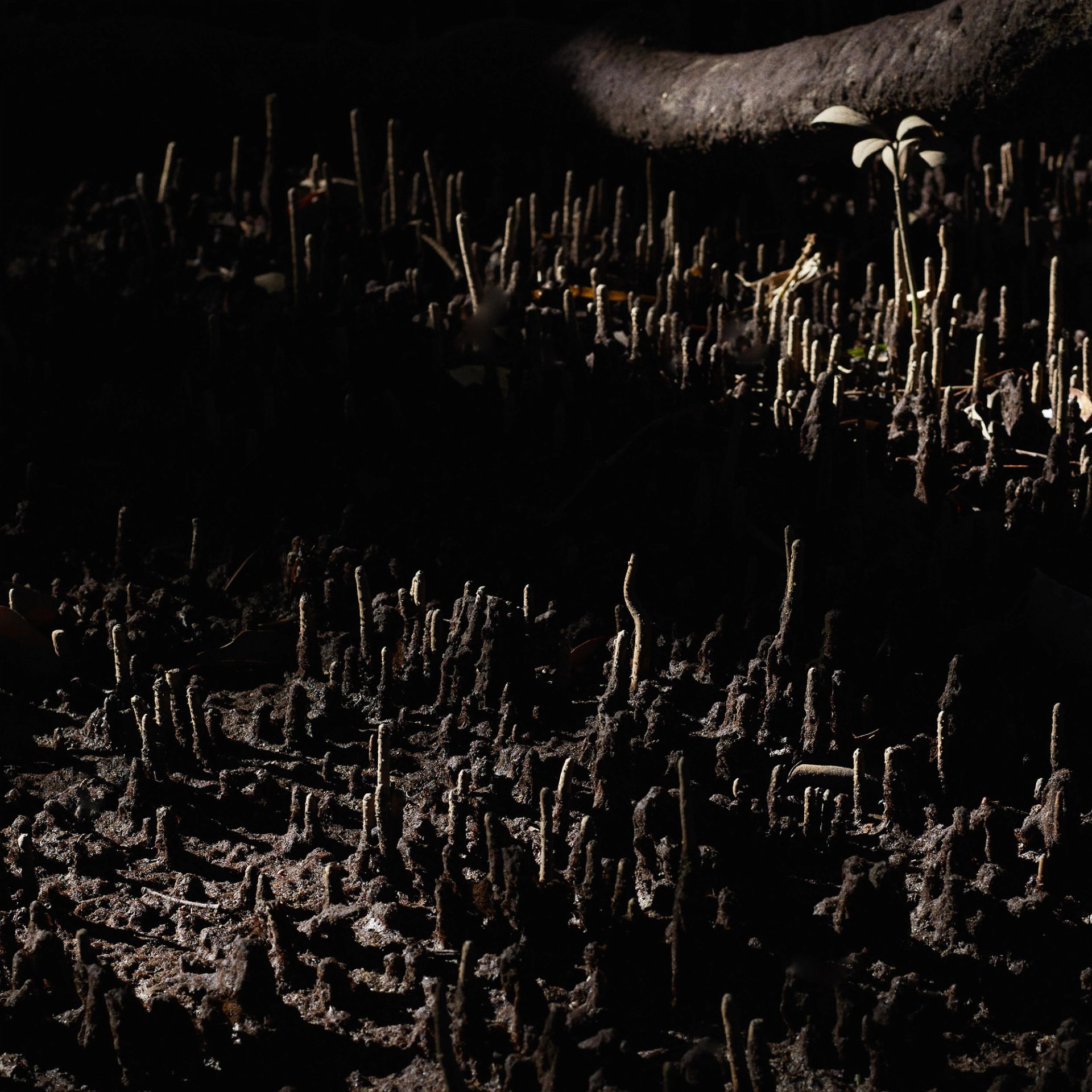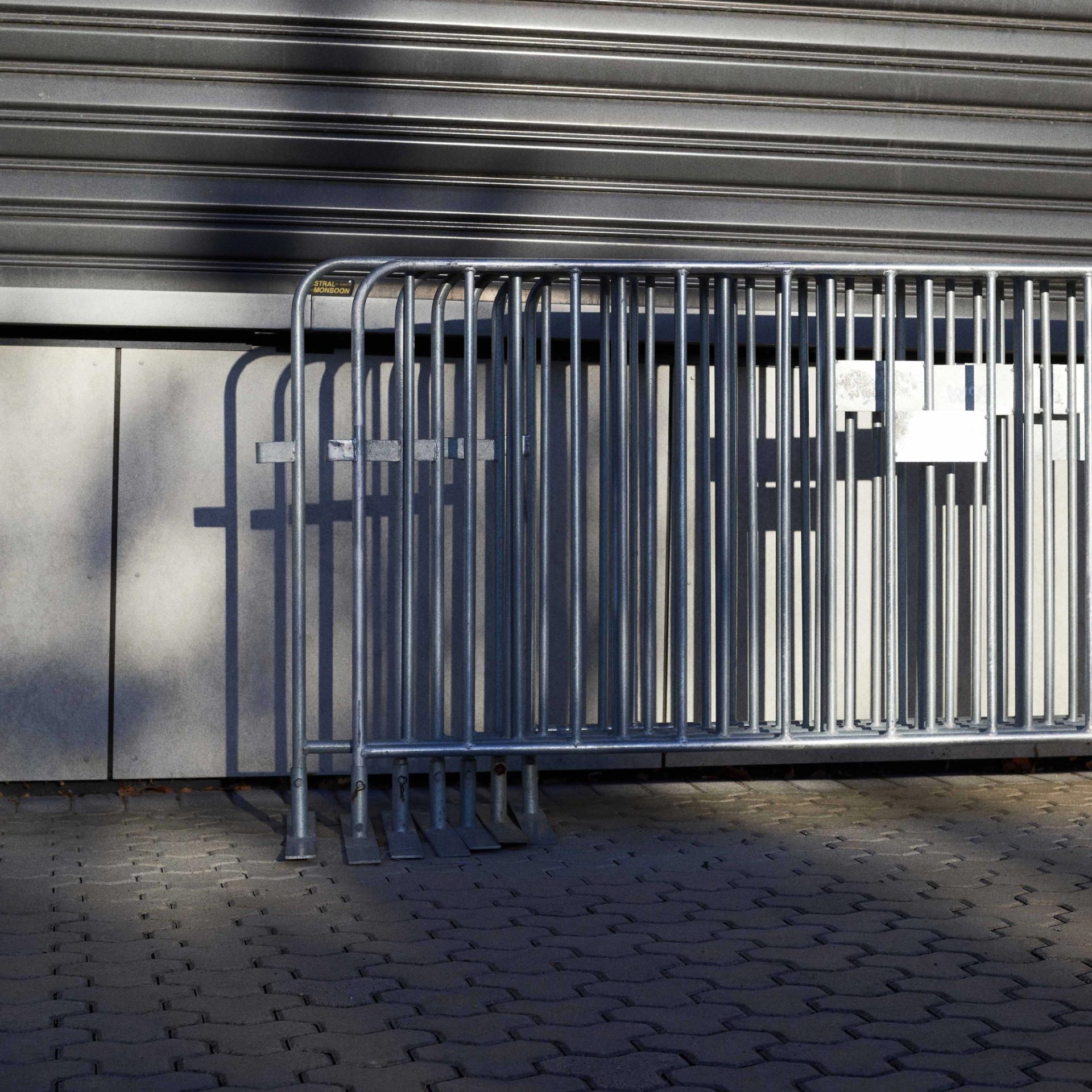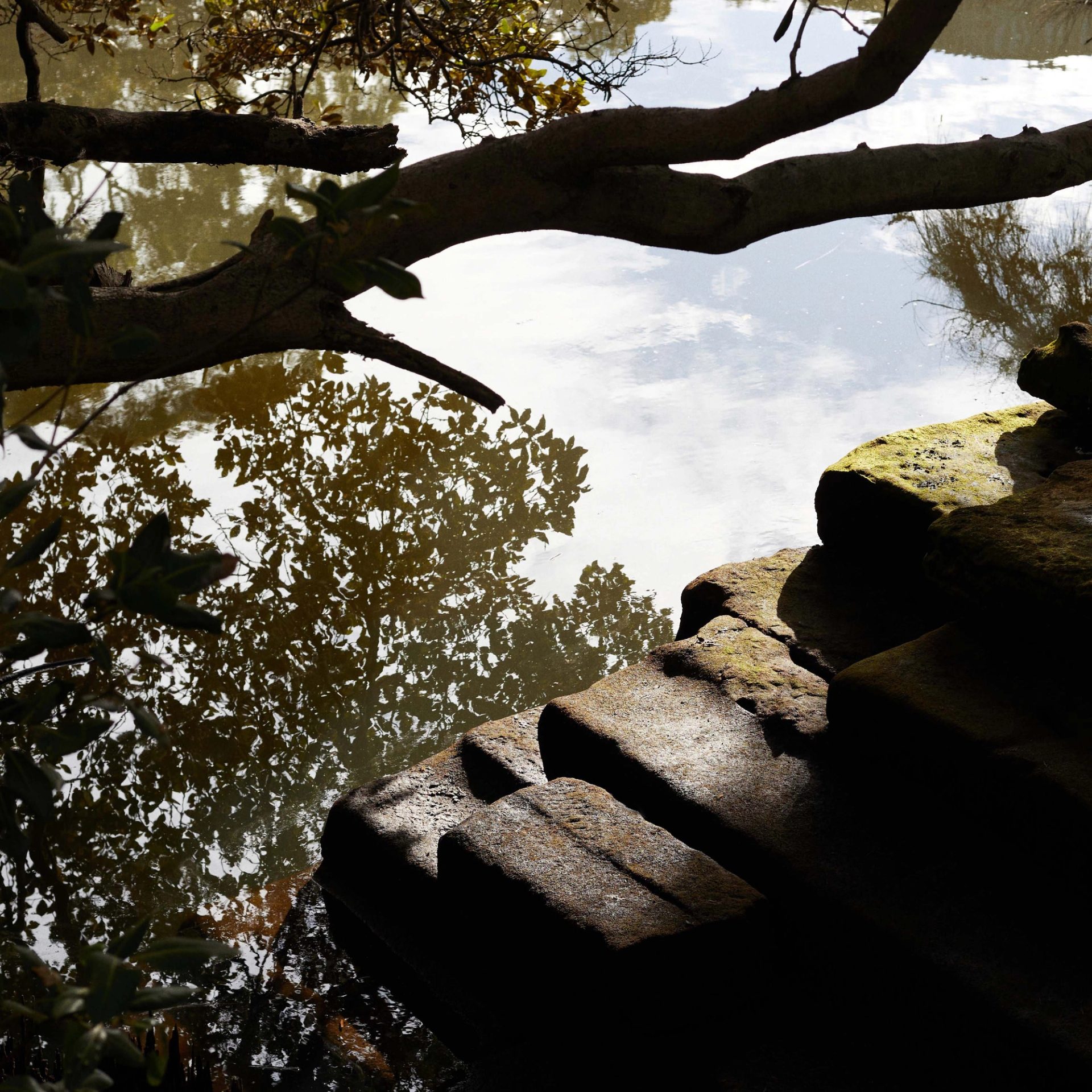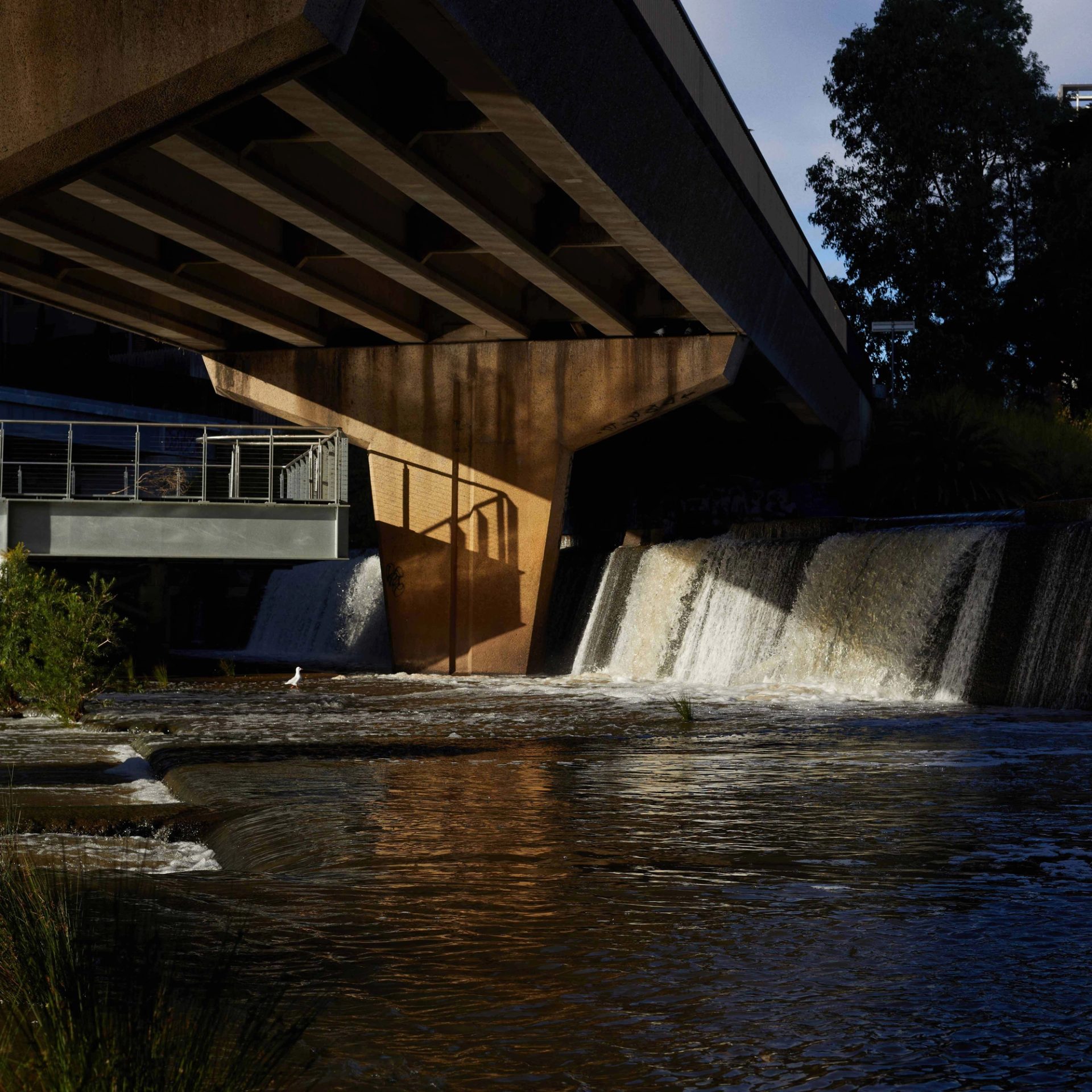The Tree Still Grows the River Still Flows: Country listens Country remembers

Willem Brussen was commissioned by Powerhouse to write this essay for The River, a series of new writing and photography responding to the landscape, communities and histories surrounding the Parramatta River.
The Tree Still Grows the River Still Flows: Country listens Country remembers
—
I am a descendant of the Reid/Goldspink family line from the Baramadagal people of the Dharug Nation, and I grew up off Country. Over time and generations, my family moved further south, eventually settling on the lands of the Wurundjeri Woi Wurrung and Bunurong/Boon Wurrung people of the Kulin Nation. Now,I return like the eel. The stories are in me, and they need to be reawakened through listening and learning. I return to my Elders, who belong to the clan groups that make up the roughly thirty clans of the Dharug Nation and are keepers of our knowledge and stories. These yarns I had with Aunty Julie Christian (Baramadagal), Aunty Karen Maber (Cabrogal) and Uncle Chris Tobin (Boorooberongal) are part of our remembering.
—
When I went to my Elder, Aunty Julie Christian, to yarn about the river, the first thing she said to me was that she feels sadness when she visits the river: ‘I am sad when I go there.’ She told me of a Moreton Bay Fig tree on the Parramatta River, we would later spend time together with these trees by the river. The tree was growing into the concrete and had a wire fence around it. Around the tree were 'do not enter' signs, with concrete on one side and manicured green lawns on the other. Aunty Julie showed me how the fences, which attempt to control the land around the river, smother and hurt the tree – a metaphor for the colonial need for control and order, and destruction of the pre-existing community. This was not the only tree in this area that was fenced in; other trees were also growing through the fencing line.
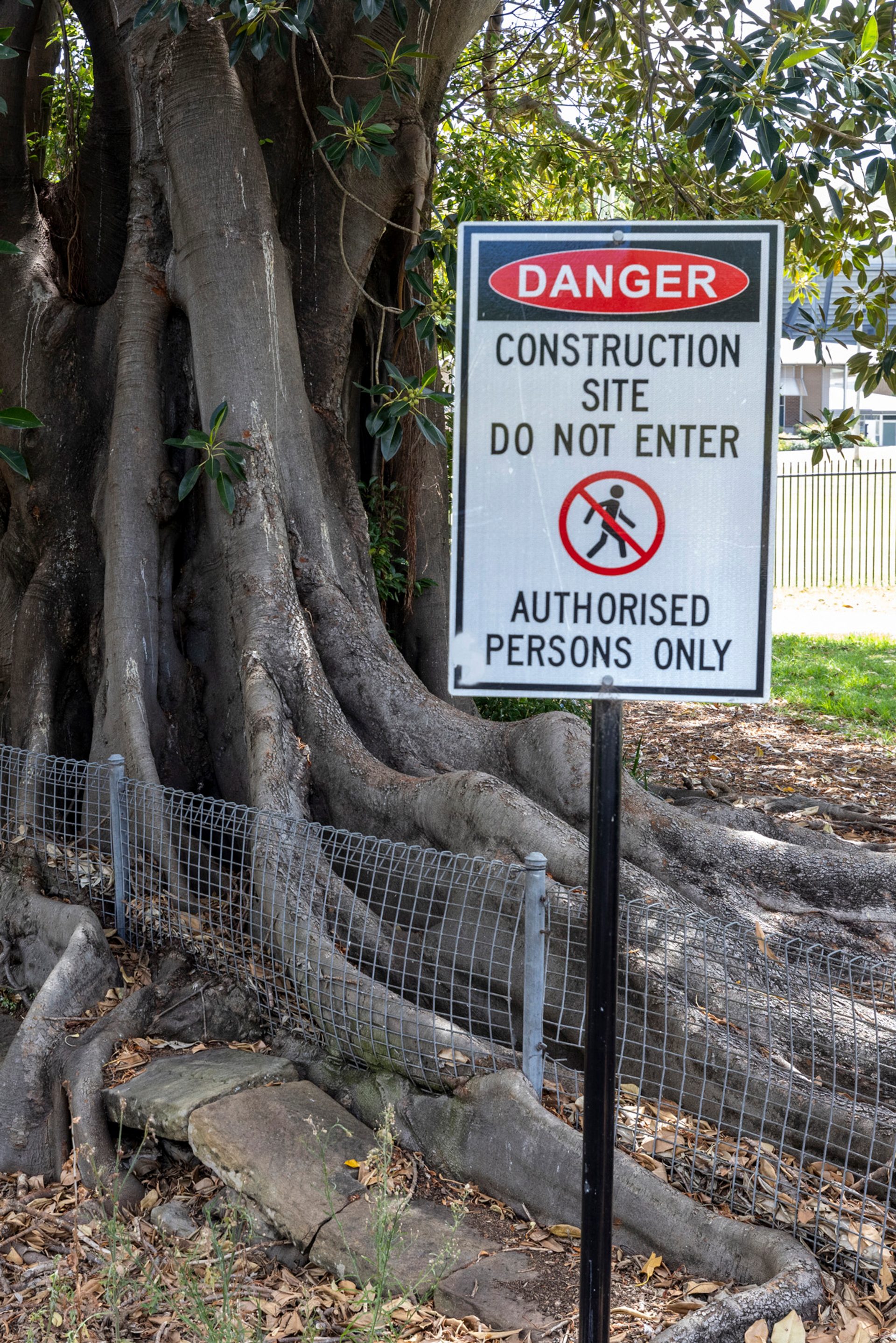
The more time I spend with these trees and on Country, the more I realise that we need to listen to the trees and to Country because they have a story to tell. Country bears the scars of its people. Country has the memory of what has taken place on it, and it is that collective memory that we need to hear. In some cases, it is there in plain sight; in others, you need to look and listen more closely.
The first yarn I had with Aunty Julie about the river and the trees took place on Zoom; we then spent more time on Country and continued these yarns. We often find ourselves navigating through two worlds, with a foot in that of our traditional way of doing things and that of the modern world we live in, using both to stay culturally connected.
During our Zoom call, I was on Dharug Country; however, Aunty Julie was calling in from Wiradjuri Country where she now lives. Also with Aunty Julie was Aunty Karen Maber, who was eager to add that, when she was growing up, she never went to the Parramatta River, as ‘everybody knew [it] was really polluted. I didn't go to Parramatta, but I knew about the river being polluted.’
She continued to say, ‘It was like it was written off, and that's what I think of Dharug as well since I've been working and realising more of the history … it was just written off, it was just not known.’ This dispossession is a common thread in the story for many Dharug people, the narrative of Dharug history that Aunty Karen spoke of was how it was, ‘like nothing could be done, that's how it is … the factories and all the history of just taking the profits of polluting, just pouring all that lead and gases into the water, into the river. That was the narrative, nothing can be done, shame.’
It is a shame that for so long Dharug history was written off, but it doesn’t always have to be that way. Through the strength and the resilience of our people, culture will continue and the river will still flow. This is something that Aunty Karen is keen on emphasising to people in her work at the Dharug Keeping Place at Parramatta PHIVE. As Aunty Karen was learning more about this place, she too drew on the guidance of Elders. She spoke to Aunty Julie Jones, who took her to the river to talk about its importance.
Aunty Karen recounts that when Aunty Julie took her to the river, she thought, ‘wow, they're the same memories that I had on the coast – water and the families having fun. I could imagine the laughter.’ Then Aunty Karen had a moment where she, ‘looked, and there's oil slicks on the river. Like there is no fun to be had any more … so that part was sad. Yet the beauty is still there. As we were talking, a falcon flew up the river at eye level virtually. And it was just, wow, there's so much hope.’ So much has been taken away from us over time, but we retain that hope for future generations.

As one of the most significant locations of early contact between Indigenous and non-Indigenous people, the Parramatta River has been at the heart of a lot of pain and conflict. I met Uncle Chris Tobin by the river in Parramatta Park, near Old Government House, a place of injustices that still shape the lives of so many people in our community today.
As Uncle Chris and I walked along the river, he pointed out that where we were walking was a pivotal location in the building and imagining of early Sydney. It is also the home of a resistance that started from the beginning of colonisation and is continuing to this day. ‘Pemulwuy crossed the river, walked up to the barracks and told them to stop hunting us down like animals,’ Uncle Chris told me. ‘He came up with 100 men; they all marched up there.’ As Uncle Chris told this story, he pointed to the grassy hills beyond Old Government House and I could picture the scene: these great warriors with their spears coming up against a new threat on their way of life, and the physicality of the battle that took place, but also all the emotions running through the minds of Pemulwuy and his men. This was one of many conflicts that would take place in the area. It’s these old stories that are still with us that we can draw our strength from.
Another story of activism exists here, this one from Baramadagal man Maugoran’s early attempts at resistance. Uncle Chris told me ‘Maugoran went to Governor Phillip to say there is trouble here, you are bringing in too many people. And Phillip's response was to actually just send more soldiers.’ Maugoran, being a Baramadgal man, is one of my ancestors. When I hear stories of my ancestors, I feel a sense of pride but also sadness because of the disrespect and the brutality they experienced, like in this story about Maugoran, but also in the stories of my direct line ancestor Peggy Reid/Goldspink, who was one of the first children to be institutionalised at the Parramatta Native Institution and then later Blacktown Native Institution.
The colonisers saw Baramada as fertile land, and many farming settlements were established here. Countless colonial atrocities – some known, some lost to time – have occurred on my ancestral lands. There is a pain that remains from these acts of violence, but there is also a sense of resilience. As Uncle Chris explains, ‘Baramada’s seen colonisation, settlement and the frontier wars. It was an early example of the institutionalisation of children. The Parramatta Native Institution was a school set up here in Parramatta [where Parramatta Square is now] by Governor Macquarie and it was to educate young Aboriginal children to be “useful” in the community.’
This attitude of what it means to be ‘useful’ did not factor in consideration of what might be useful to the Indigenous people; it was fuelled by greed and a desire to control. It also had devastating impacts, many of which are still being felt today. As Uncle Chris went on to say, ‘They weren't trying to make them lawyers or anything like that. They wanted them to be servants. But they hadn't realised that even though they made us servants, institutionalised us and took our children away, they could never take our culture and our sovereignty over this land.’
Uncle Chris mentions Barron Field, one of the first Supreme Court judges of NSW. In 1825 Field observed that Aboriginal people were not willing to be servants or masters over anyone* – an opinion that illustrates the foundational differences in the two ways of living. Further to this is the ongoing resilience of our people from the very beginning of colonialism and till this day. Barron Field's own observation shows why the colonial project was never going to be successful.
Despite the best attempts to strip us of our connections, it is our connection to Country and the river that continues to flow through. These connections provide healing and a sense of belonging to place.
Baramada today is a meeting place for people of all different walks of life and from many varied cultural backgrounds, but it has always been a meeting place. As Uncle Chris explained to me:
In the old days, roughly where the ferries come in now, there used to be a rock where the freshwater of the river drops off into the saltwater of Sydney Harbour. Baramada is a meeting place between the freshwater and saltwater clans. In fact, Baramada was known to have these feasts. Traditionally, people would come to Baramada when the eels had fattened up. There used to be a lot of lagoons around Baramada. So the eels were not just in the river but also in the lagoons, and when it would rain, the eels would come out from the lagoons, float across the land and into the river. The abundance of food at this time was very important because it allowed clans to get together.
These meetings allowed for cultural practices such as marriage laws to take place. This idea of coming together was integral to our lives. ‘The feasts were important to keep those family connections going, and the eels provided that food source for large numbers to be able to gather,’ he said. ‘So that's why the eel is very important in traditional times and is part of our deeper connections to this place.’
These gatherings are not to be confused with the feasts that Macquarie would establish, which Uncle Chris told me were designed to lure out Indigenous families with the intention of stealing and institutionalising their children. Macquarie’s feasts were a way of taking our traditions of gathering, sharing and relying on community, and using them against us. Through listening to these stories from the past we can contextualise the present, where the intergenerational trauma of child removal is still deeply felt by many in our communities.
In this densely populated area, there are buildings on top of our sacred places, our stories. When I’m on Country, I picture my ancestors lying underneath. Being on Country, I feel my ancestors’ spirits, and I have a sense of the past with me in the present. I imagine these stories almost to the point where I can visualise my ancestors, especially as I hear stories about them unfolding in this place – a place which is now covered over with concrete.
Like Uncle Chris, Aunty Karen spoke of Baramada traditionally being a meeting place and how it still is. ‘I have learnt more in this past year than I had in a lifetime because it's a real meeting place,’ she said. ‘It's got such a strong energy. And that river, much like the trees, the river is sick, but it's there. It refuses to give up. It’s virtually saying I'm choking, but to me when I look down, it tells you its history. You can't get away from it, because it's telling you it's been abused, and it's still there. It's not going anywhere.’

During our conversation, Aunty Julie touched on the pollution in the river, saying:
I look into the river and see rubbish and that is also something that saddens me. People walk along throwing stuff and it ends up in the water. When I think of the eel, I think they can swim down low in the river. It doesn't like the spotlight. Down there is rubbish, toxic rubbish, and that is the part that saddens me when I go back on Country. I love it, but I wish things were done better.
When I look at the water, I too feel that sadness. I know that the river is not the same as it was for my ancestors, and despite attempts at restoration, I’m not sure it will ever be the same. However, the river like its people is still here and therein lies some hope for the future. As Uncle Chris shares, ‘the big story now is about restoring and repairing this place, which has been a gorgeous place for thousands of years.’ Uncle Chris proudly tells of how ‘our culture can, provide teachings to try to get the modern world back on track. I think a lot of people look at Aboriginal culture as a primitive culture, and I'm trying to get people to understand that it's not. The word “primitive” indicates a culture that is just beginning.’
For the early colonisers in their limited understanding, it may have appeared this way but they came from a world that at this time was leading into industrialisation and creating so many problems that would begin to unfold. As Uncle Chris tells it, ‘our people not relying on heavy industrialisation meant that we were actually better off than them in many ways. That's what our Country and our culture is able to point out to people, that there are other ways that humans can live.’
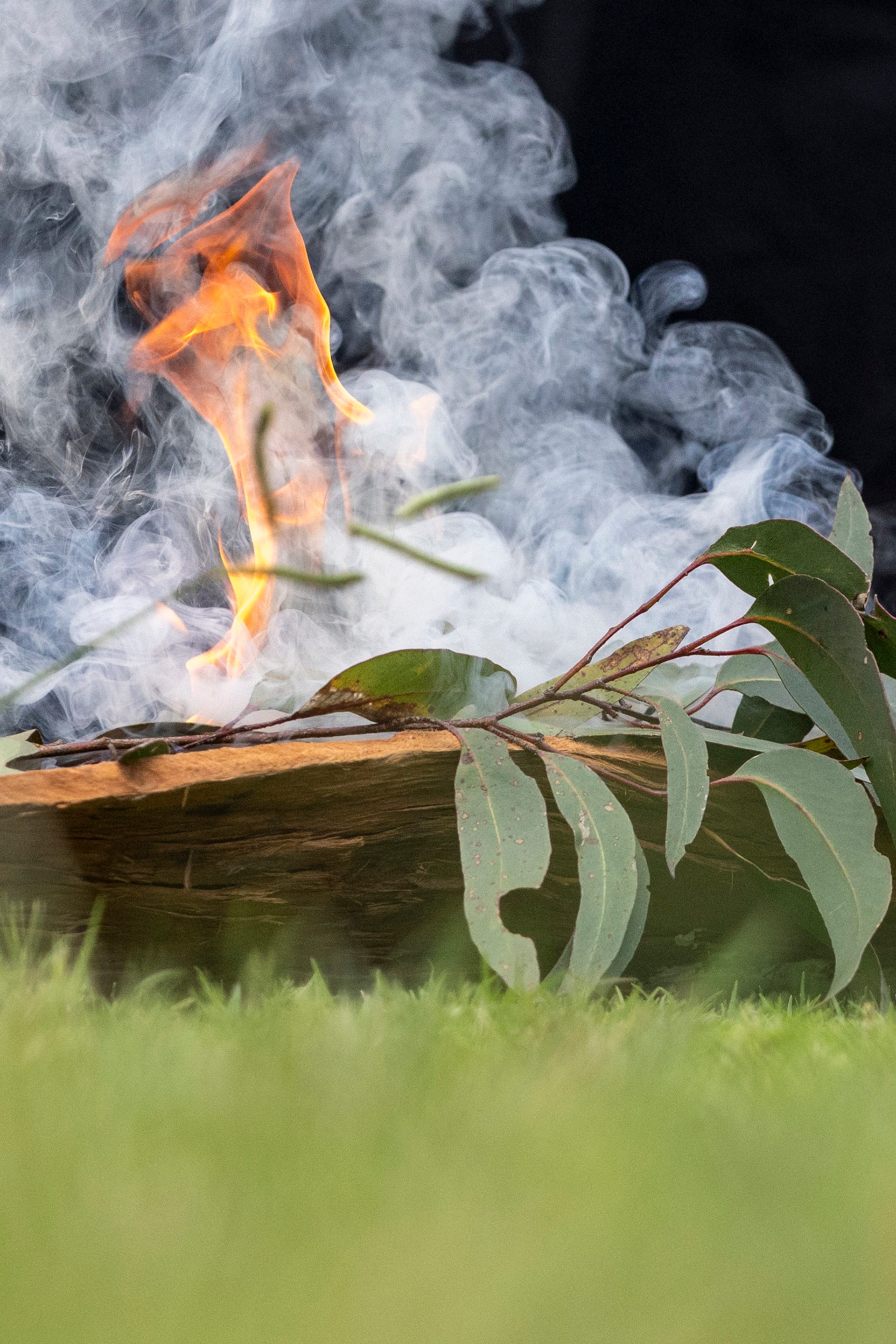
Through having these yarns with my Elders, I have the sense that future generations will be stronger in culture because of the work that is being done today, and this is what necessitates this work of connecting with each other – be it on Country or through modern technology. We know that no matter where we are, we have the strength of our culture and our people. We are still here, and we will continue to be here, on this river and elsewhere.
Aunty Julie also told me about the eel storyline of the Baramadagal, whose totem is the eel:
The eels’ journey to Baramada, surviving a long and treacherous journey from the Coral Sea when so young, only to complete their end-life cycle and return as an adult to where they first set off. Once they reach their destination on Australia’s east coast, they find their way to ‘set down’. Hidden in the fresh waters of Sydney, the female eel decides, when the time is right, for her to begin her journey through to the Coral Sea, back to where she was born, so that she can spawn and die. One mysterious feature of eels is their endurance to overcome many barriers. They survive swimming from one environmental condition into another, facing varied changes in water currents and temperatures, entering ocean pathways, they travel through their life cycle to return to the Coral Sea.
The eel always returns to Country to ‘set down’, and as a descendant I feel we have a need to do this, too. There will be hardship along the way, but we know we can endure just like our ancestors. For me, it is through these stories of resilience that I am able to draw on my strength as a Baramadagal person. I know that we have overcome many barriers. I continue to learn about myself through my culture and by connecting with others. Though we have our own individual stories, there is always a sense of the collective. We are stronger together, and I feel that our story is one of survival in the face of dispossession as we find our way back to Country. Like the trees that still grow, like the river that still flows, we are still here.
*Geographical Memoirs on New South Wales (1825), Barron Field (ed), Appendix Chapter II: Journal of an excursion across the Blue Mountains of New South Wales.
First Nations languages are part of oral traditions that have existed for millennia and do not directly translate into the Roman alphabet, as used in English. Therefore, First Nations languages’ sounds have been interpreted in many different spellings. This means that the same words, including language groups and place names may be spelled in two or three different ways. For this publication, we have privileged the spellings of First Nations words the way the authors have suggested unless advised otherwise by Traditional Owners.
Willem Brussen is a proud Baramadagal/Burramattagal man of the Dharug Nation and has Dutch, German, Irish and English ancestries. He has grown up and lives off-country on Wurundjeri Country. Willem knows firsthand the ongoing effects of colonisation and dispossession, and this lived experience affords him the sensitivity, understanding and motivation with other First Nations people and with finding ways of healing.
Willem is a social worker with over a decade of experience. He’s also an avid Australian music fan, with a special appreciation for First Nations artists, and has written about music for several publications.
The River
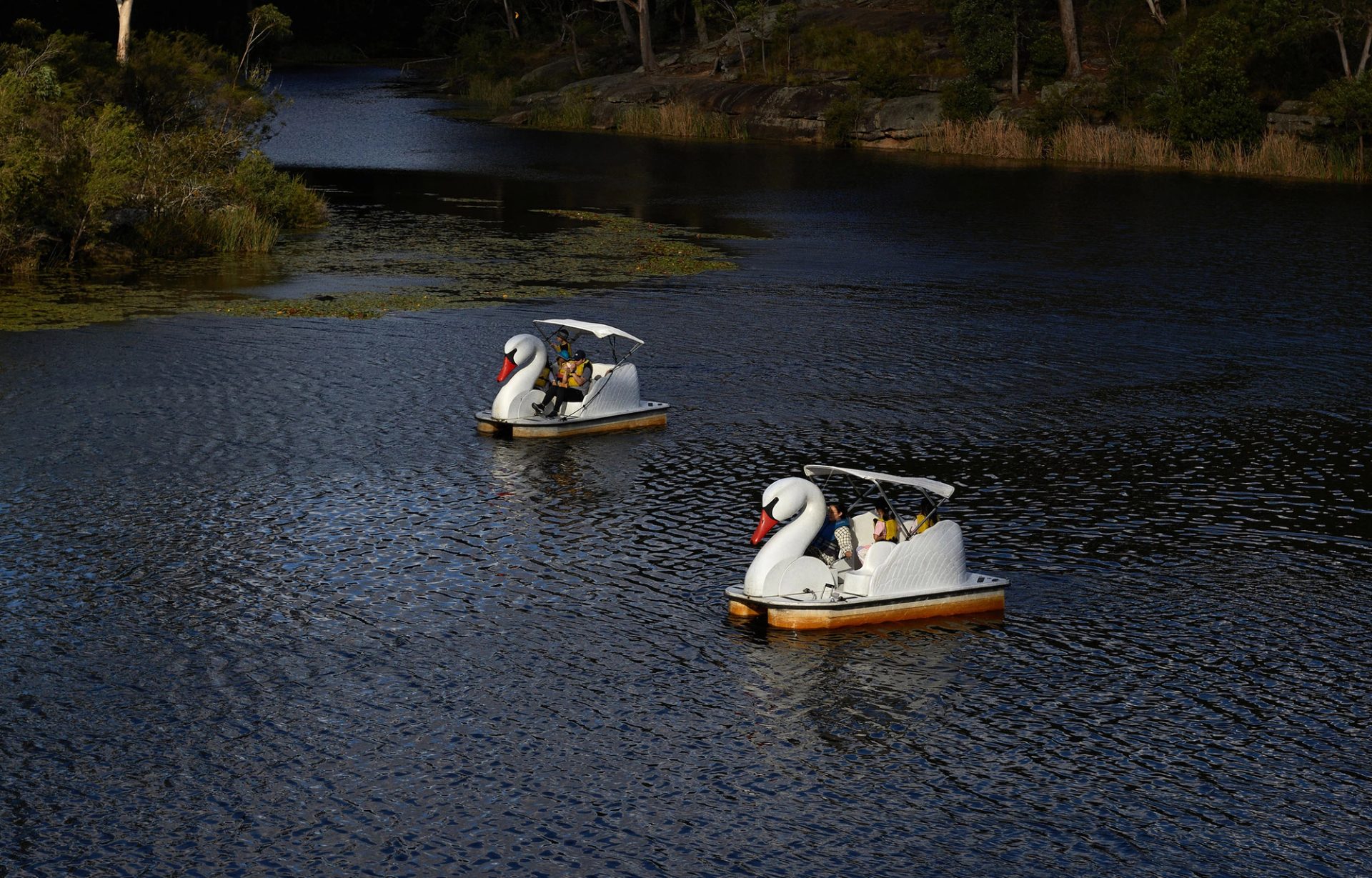
The River is a collection of new Australian writing and photography responding to the landscape, communities and histories surrounding the Parramatta River. Featuring Lachlan Brown, Willem Brussen, Felicity Castagna, Anwen Crawford, Maarama Kāmira, Joseph Mayers, Fiona Murphy, Conor O’Brien, Jiva Parthipan and Vivian Pham.
Writer: Willem Brussen
Commissioning Editor: Felicity Castagna
Head of Writing, Powerhouse: Jemma Birrell
First Nations Cultural Advisors: Beau James, Nathan Mudyi Sentance
Senior Editor, Powerhouse: Katrina O'Brien
Copy Editor: Ellen O’Brien
Photos: Joseph Mayers

















